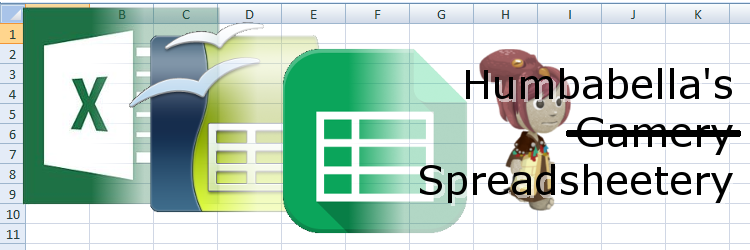In the past I wrote about bidding systems and how they can only balance games to a certain granularity. Not a groundbreaking observation but a worthwhile one.
This past weekend told about the "Pie Rule" for balancing going first in a two player game. This is a rule modeled after the cake splitting algorithm of "I cut, you choose." One player is chosen to take one turn. The other player then decides whether they would like to be the first player who has just made that move or the second player whose turn is just starting.
You could use this rule to balance a game where the second player has the advantage too. Of course you can't take two normal turns and then give the first player the option of taking the second seat because the first player could presumably sabotage their first turn so badly that they would be sure the second player's advantage was maintained. Instead, have one player take two turns, for both the first and second player, then have the other player decide whether to be the first or second player after that.
You could, in fact, extend this rule to any number of moves. A chess master could presumably sit down at a board and make a dozen moves and then ask me which side I'd like to play and I would have no idea.
Of course this does give one player an advantage. In the chess example, I have a lot to gain by having someone better than me make the first number of moves. If they try to keep the game even then they probably play my eventual side better than I would have. If they play giving one side an advantage then I have a 50/50 shot of ending up with that. Unless they can seriously next-level me I stand to gain as the weaker player, and they probably can't reliably trick me because if they are better than me then I may miss their trick. If I am sure they are better than me I can take any skill out of their end by flipping a coin to make my selection.
And while this is obvious 20 moves into the game, the same should hold true for making just one move. If the better player is the mover, it will tend to skew the game to make the match closer because they will present a more even board than the weaker player could manage. Conversely, if the weaker player moves and the better player chooses then the better player is at a greater advantage than they would be if a coin had been flipped to see who went first and the game had been played normally.
So this method of choosing who goes first does not systematically favour the mover or the chooser but it does favours one or the other depending on who is the better player. Ultimately, you are still flipping a coin to see who gets an advantage.
And of course all of this goes back to actually dividing pies between two people. If you are very good at cutting a pie into two even pieces then you want to be the one choosing, not the one cutting, you don't want to be backed into a corner where you are forced to make an even split where you know the opposition would have made an uneven one. If you are poor at cutting a pie in half then you want your opponent to make the cut so that they can't take advantage of your mistake.

One advantage the "cutter" gets in a 20 pre moved chess game is to take the game down a very strange line of play which they have studied well and their opponent has not.
ReplyDeleteThere are some games with a couple paths to victory where I'm only really good at playing one of them. As the cutter, I could put both players on a path to that goal.